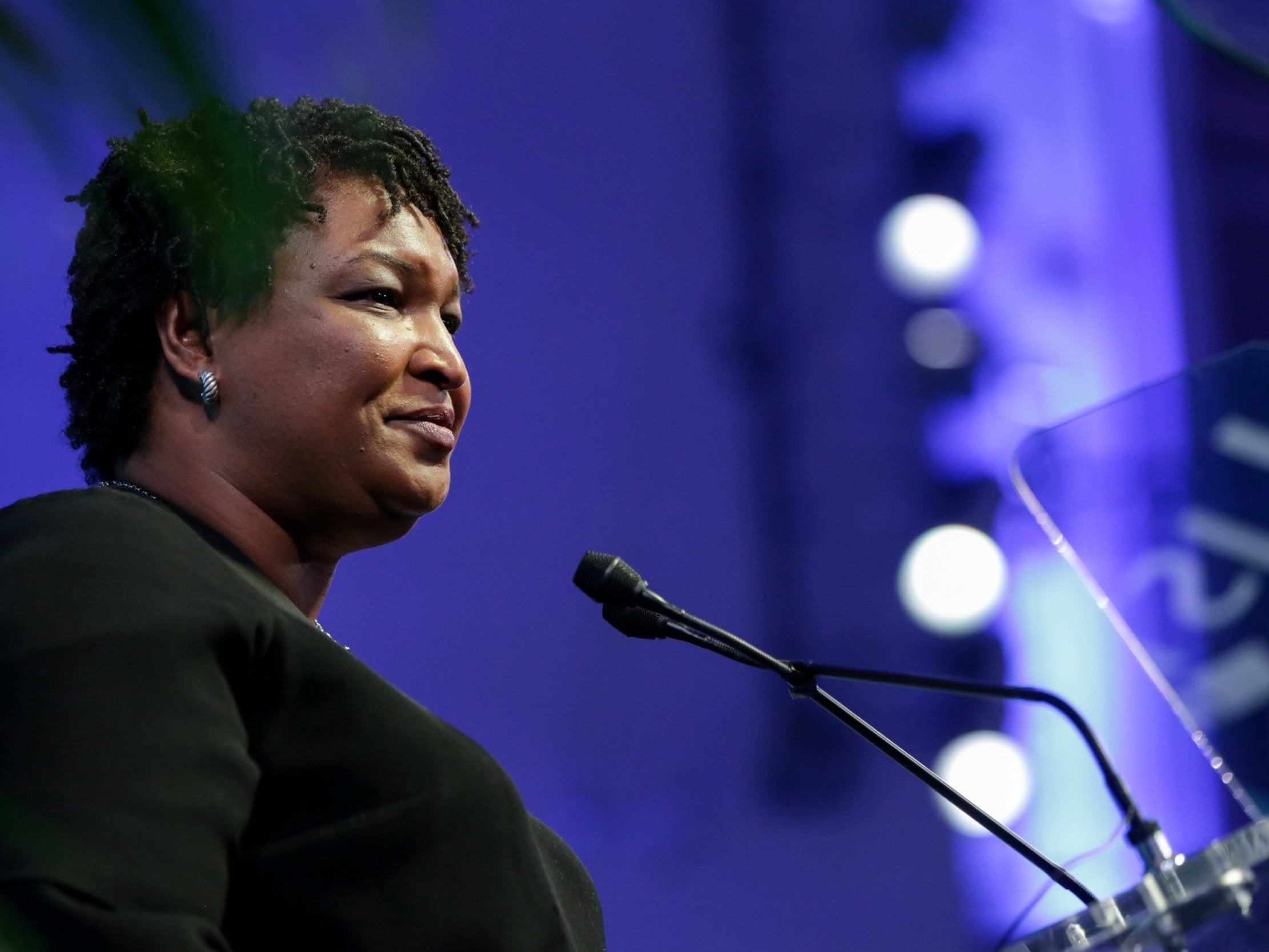Midterms 2018: Democrat Stacey Abrams' burning of Georgia flag with Confederate symbols resurfaces before major debate
If elected, Stacy Abrams could become the first black female governor of the nation

At a protest on the steps of the Georgia Capitol in 1992, Stacey Abrams, now the Democratic candidate for governor, joined in the burning of the state flag, which at the time incorporated the Confederate battle flag design and was viewed by many as a lingering symbol of white supremacy.
Abrams’ role in the protest, which took place at about the end of her freshman year at Spelman College in Atlanta, has begun to emerge on social media on the eve of her first debate Tuesday with her Republican opponent, Secretary of State Brian Kemp. Kemp and his allies have sought to portray her as “too extreme for Georgia.”
If elected, Abrams, 44, would become the first black female governor in the nation. In August 2017, she injected the issue of Confederate memorials into the governor’s race by calling for the removal of the giant Confederate carving on Stone Mountain, a granite outcropping east of Atlanta, noting, correctly, its ties to white supremacy and the revival of the Ku Klux Klan.
Kemp, who is white, has said that Georgians should not “attempt to rewrite” the past, and said he would protect the monument from “the radical left.”
Abrams’ campaign, in a statement Monday, said her actions in 1992 were part of a “permitted, peaceful protest against the Confederate emblem in the flag” and part of a movement that was ultimately successful in changing the flag.
“During Stacey Abrams’ college years, Georgia was at a crossroads, struggling with how to overcome racially divisive issues, including symbols of the Confederacy, the sharpest of which was the inclusion of the Confederate emblem in the Georgia state flag,” the statement read. “This conversation was sweeping across Georgia as numerous organisations, prominent leaders, and students engaged in the ultimately successful effort to change the flag.”
It added: “Abrams’ time in public service as deputy city attorney and as a state legislative leader have all been focused on bringing people together to solve problems.”
A spokesman for the Kemp campaign, Ryan Mahoney, could not be reached for comment Monday.
In the 1990s, few issues in Georgia were more politically explosive than the Confederate-themed design of the flag. After much debate and protest, the design was changed in 2001 in such a way that the battle flag’s size was minimised. The battle flag was completely removed from the design with a second change in 2003.
Until the changes, it had been vehemently opposed by African-Americans and other Georgians who noted that the battle flag design element had been introduced by a state legislature in 1956 that was intent on flaunting its contempt for pressure from the federal government to integrate after the Brown v. Board of Education decision.
Eventually, however, Atlanta city officials refused to fly the flag over municipal buildings, and many in the Atlanta corporate community considered it to be an embarrassment.
The change to the flag is believed to have cost Georgia’s last Democratic governor, Roy Barnes, his re-election bid in 2002, as he faced criticism from a vocal group of “flaggers” who argued that the symbol was not about racism, but the valour and sacrifice of the South’s Civil War troops.
The 14 June protest in 1992 and Abrams’ role in it, is described in a pair of local newspaper stories at the time. A photo of Abrams and two other African-American students burning the flag appeared on the front of the local section of the Atlanta Journal and Constitution newspaper the next day.
In the second article, about two weeks later, Abrams spoke of the backlash, saying that a woman had called and told her that the flag was a symbol of Southern heritage, and that black people who did not like the flag could “get the hell out.”
In the article, Abrams spoke about how she kept her parents, who had been active in the civil rights struggle in Mississippi, abreast of her own budding activism in Atlanta.
Abrams had recently helped lead a peaceful protest over the acquittal of four Los Angeles police officers who had been accused of using excessive force in the beating of a black motorist, Rodney King. But other protesters had turned violent.
The New York Times
Join our commenting forum
Join thought-provoking conversations, follow other Independent readers and see their replies
Comments